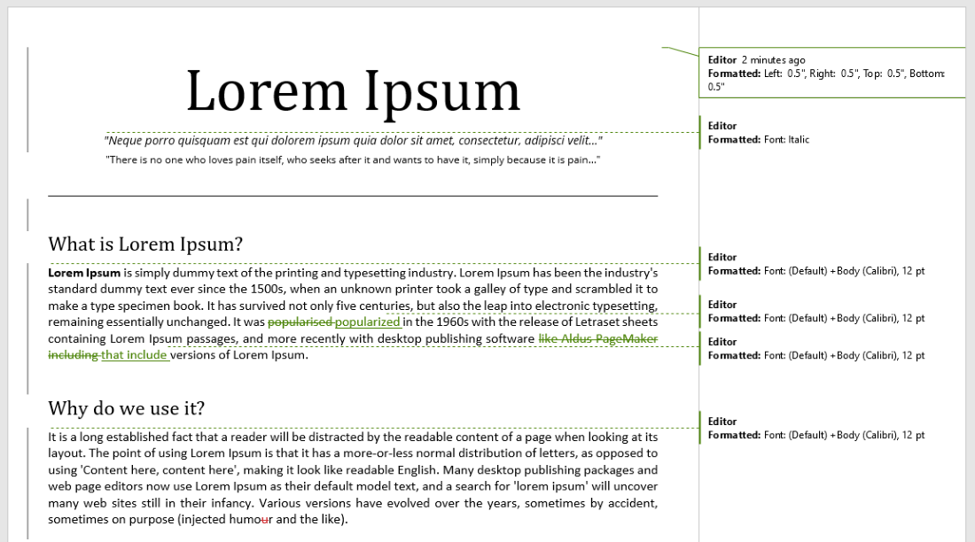

For example, I have found examples in Danish versions of Word where even more terms have been introduced due to inconsistent or incorrect translation. In other language versions of Word than English, the confusion may be even worse since the translations may not be consistent. The way Word visually presents the tracked changes on the screen Removes (or deletes) a tracked change from the document, as if it had not been made Incorporates a tracked change in the document, as if it belonged to the original document. Tracked changes or comments shown in the margin of a document Note that the terms markup and revisions in most cases also cover comments inserted using Word’s comment featureĪ person who has edited/made changes to a document The changes that have been marked by the Track Changes feature Terms with the same meaning seem to be used more or less randomly. It can be a bit confusing since some of the terms mean the same. In the different commands related to Track Changes in Word, you will find a number of terms in use. Terminology used in Word in relation to Track Changes Please refer to that article for help on comments in Word. I have covered the Word comment feature in detail in the article How comments in Word work. Some of tools discussed in this article are also used in relation to comments. Word refers to both tracked changes and comments that are added using Word’s comment feature as revisions. If you are using an older version of Word, see Shauna Kelly's article about Track changes, covering Word 2010 and earlier versions. This article covers the Track Changes feature as it works in Word 2013, Word 2016, Word 2019, Word 2021, and Word for Microsoft 365. Microsoft has changed the Track Changes features in Word 2013 and later versions compared to earlier versions. Word has included Track Changes functionality for decades.
#Using markup in word how to
The feature includes several tools you can use to control which types of changes to track, how to display the tracked changes, and finally how to accept or remove the tracked changes. Track Changes in Word is a powerful feature that makes it possible to mark changes that are made to a document.

These arbitrary values can be used to assign semantic meaning to parts of your content.Learn what Track Changes is, how to track changes in Word, how to remove tracked changes in Word, and much more. For example, as explained in the following articles, content controls (in addition to these other technologies such as bookmarks) enable developers to create structured documents and can be used to assign arbitrary values to structured content. Many of the scenarios implemented by using custom XML markup can be implemented by using alternative technologies, such as content controls, form fields, and bookmarks which are available in Word 2007, Word 2010 and Word 2013. If you are a developer of a solution that uses custom XML markup, be aware that support for custom XML markup is no longer available.
#Using markup in word iso
Open XML standards (all ECMA and ISO versions) are not affected.Ĭustom XML markup that is stored within Word 97-2003 document (.DOC) files is not affected. Content controls are a common method of structuring document content and mapping content to custom XML parts. The following features of Word are not affected by the update.Ĭontent controls are not affected.
#Using markup in word software
Generally, customers who purchase or license Word 2007, Word 2010 or Word 2013 from Microsoft after Janufor use in the United States and its territories have to use updated software that does not include a particular custom XML tagging implementation. The removal of custom XML markup is the result of a United States court ruling on December 22, 2009. The new versions of Word 2007, Word 2010 and Word 2013 can still open these files, but any custom XML markup is removed.Ĭustom XML markup in a Word document is visible as pink (the default color) tag names surrounding text in a document: Versions of Word that are distributed by Microsoft after Januno longer read the custom XML markup that may be contained within. Microsoft Word 2013 displays the error message for the following file formats in addition to the file formats previously listed:


 0 kommentar(er)
0 kommentar(er)
